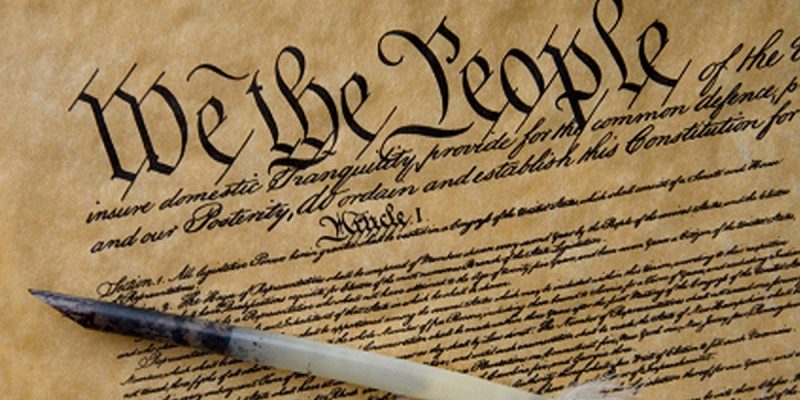This week, there are some white-hot discussions about who has the power to re-ignite our economy–the President or the Governors. Of course, we should all be mindful that politics is the looming specter over every thing that happens from here on out, medical science, notwithstanding. November is coming.
To understand what’s happening today, you must understand the history of the Constitution, and how it was finally confected and why.
When the United States was a nascent nation, it needed one form of unifying government to congeal the thirteen original states from flinging off into autonomous territories. There was much debate, as the new Americans didn’t want a strong centralized government that could easily replicate the crown. They had enough of that type of tyranny and they weren’t ready to tolerate any more. But they wanted a nation, too, while respecting their states’ sovereignty. Hence, after the Constitution (the Articles) were drafted and ratified, the Amendments, specifically the first ten, were voted on.
Remember the Federalist Papers?
To limit the power of the centralized “federal” government, the Amendments were designed to restrain the federal government from imposing its will capriciously upon the states. This is how we enjoy certain freedoms that other countries don’t. (e.g. The First and Second Amendment, to mention two)
But the suspicious “states’ righters” wanted more. They wanted a specific Amendment which would address the states’ rights in the absence of the federal powers and they confected the Tenth Amendment, which is easy to read, but sometimes hard to understand. The problem is in its interpretation and how it affects the balance of powers between the federal government and the several states.
Remember, at the time it was written, we only had 13 states.
Through time, the country grew and became very diverse in many, many ways and that diversity exist today. Since it was drafted, we had a civil war and the ballooning of the federal powers which came with Reconstruction and two World Wars. And suddenly, the states’ rights seemed to be eclipsed by the federal government’s rights to operated and control the fifty states, as one country.
If you remember during the civil rights movements of the 1950’s, states invoked the 10th Amendment and screamed “States’ Rights” to empower them to discriminate against blacks. But the federal government responded that the powers invested in the Federal Government supersede the states rights when it came down the fundamental freedoms every American enjoys. And it was a post-civil war Amendment, which gave the federal government its power to impose the constitutional rights upon the states. Ironically, the same rights they desired. (See, the 14th Amendment).
So, who has the power today? The President or the states’ Governors? Well, it depends on what rights you are speaking of.
Advertisement
There is a delicate balance, which must be observed by both parties, if our Constitution is to mean anything. This is the biggest challenge of the concept known as Federalism. Either we are 50 united states or one country with 50 franchises. How our federal government and the states address this will tell us.
While it is true the states have certain police powers reserved unto themselves, such as zoning, permitting, enforcement of state laws, health codes and the like, those laws must not be enforced by the states if they violate the Constitutional rights of the states’ citizens. Recall the Wedding Cake case from Colorado. Denver imposed a right (city ordinance),which prevented discrimination of its citizens based sexual preference by a wedding cake baker, but lost the case in the US Supreme Court, as the city’s ordinance violated the rights of the baker. It was a balancing test, which you find throughout American Constitutional Jurisprudence.
So, the President has the right to control certain aspects of its citizens’ behavior and that of the states, but it must be consonant with the Federal Constitution, and vice versa. Therefore, there must be a balancing examination between the intrinsic constitutional rights of the citizens and the police powers of the state, reserved unto to them by the Tenth Amendment. One can not violate the other and the fundamental Constitutional rights of the citizen must be sustained.
While Andrew Cuomo crows we don’t have a king, by the same token, when don’t have 50 fiefdoms either. Whatever the states do, must pass Constitutional scrutiny. It’s not the whims of the crown, but the protective wings of our Federal Constitution. Since, moreover, we are a very mobile society, interstate commerce and travel falls within he province of the Federal government,as a state’s police powers end at the state line. Hence, when need a delicate balancing of rights.
I hope this helps with your analysis. Remember: Balance.
Advertisement
Advertisement

